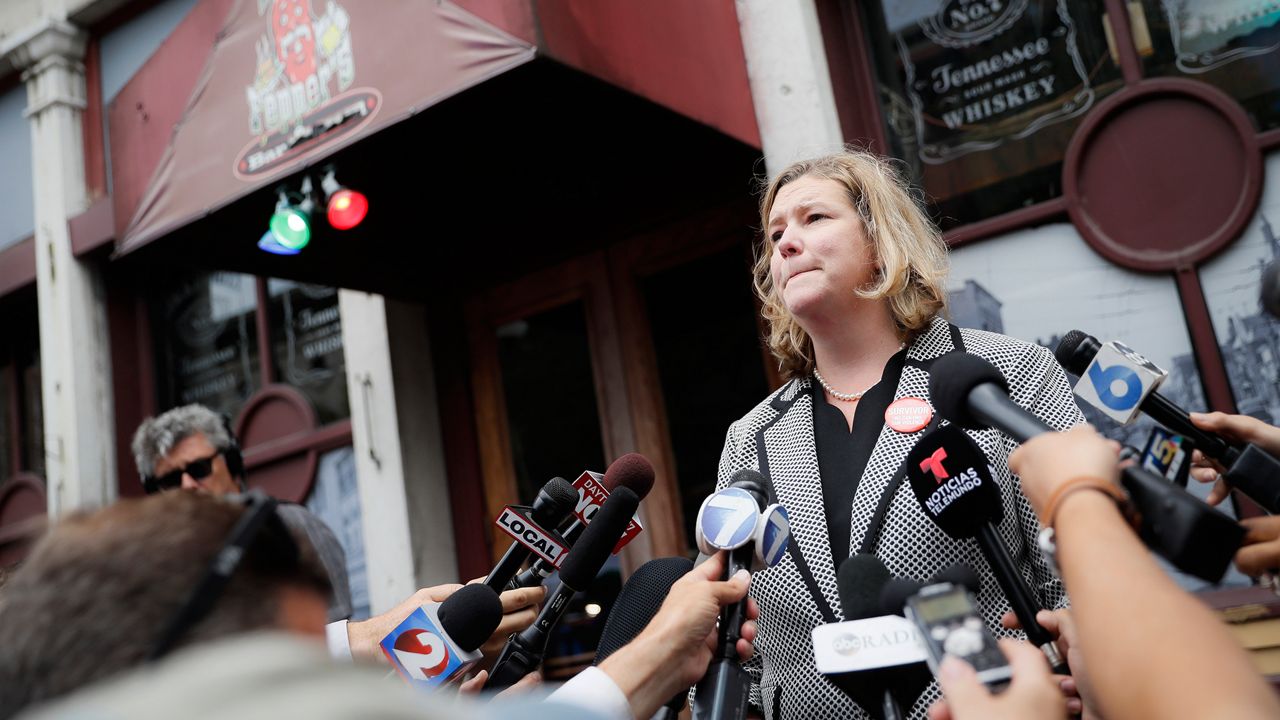COLUMBUS, Ohio (AP) — Some high-profile Democrats in Ohio are urging party leaders to remain neutral in the competitive primary between gubernatorial candidates Nan Whaley and John Cranley, as the party works to support the pick best capable of leading its ticket to long-sought wins this fall.
The push comes as screeners from the Ohio Democratic Party’s Executive Committee are set to meet Tuesday to decide who to recommend. The full committee vote would follow in mid-February.
Republicans, too, are feuding over whether their party should endorse, but the divide for Democrats comes as the party nationally is trying to avoid deep divides ahead of what is expected to be a grueling midterm election season.
The election will be colored by growing public disapproval of President Joe Biden, a Democrat, amid the pandemic and rising inflation. In Ohio, the president’s party faces an all-Republican slate of statewide officeholders with the advantage of incumbency.
Supporters of Cranley, the former mayor of Cincinnati, believe the screening panel is poised to back Whaley, the former mayor of Dayton, and don’t want her to have the cash and other advantages that come with that perk. She already has been endorsed by U.S. Sen. Sherrod Brown, who has powerful sway at the party as the state’s highest-ranking Democrat.
In a letter to committee members obtained by The Associated Press, former Democratic National Committee Chair David Wilhelm — a Cranley supporter — said he’s “not buying” the arguments that partisan primaries are divisive, expensive and “somehow a bad thing.”
“Primaries can be a very good thing, and I would argue in most cases they are,” wrote Wilhelm, who’s run campaigns for President Joe Biden, Bill Clinton and others. “Primaries force candidates to build effective campaign teams. Primaries force candidates to hone their messages and develop compelling themes. Primaries force candidates to build a fundraising base. Primaries force candidates to become, in short, better candidates.”
Wilhelm’s pleas were echoed in a letter to the editor submitted to The Plain Dealer newspaper in Cleveland by former Ohio Supreme Court Justice Bill O’Neill, a Democrat, and obtained by the AP. Former state party chairs David Pepper and Chris Redfern also have weighed in to support neutrality — having each presided over endorsements that led to losses.
“No endorsement would benefit the party, the voters and whoever wins,” Pepper tweeted last week.
In his letter, O’Neill pointed to a series of examples of the state party using its endorsement to clear the gubernatorial field for a favored Democrat in the primary, only to have the person go on to lose. Obama-era consumer protection chief Richard Cordray lost by 3.7 percentage points in 2018, Cuyahoga County Executive Ed FitzGerald by 30 percentage points in 2014 and state Sen. Rob Burch by 47 percentage points in 1994.
“Burch got shellacked, and Democrats paid for his lopsided defeat for years,” he wrote.
Their arguments mark a notable shift from what many believed would be an amicable governor’s contest between two real-life friends. The race has been dubbed “Nan v. Cran.”
One counter-argument made in favor of the party boosting Whaley and her running mate Cheryl Stephens, a development executive and Cuyahoga County councilmember who is Black, is that it’s time the party pushed gender and racial diversity at the top of its ticket.
“As the Democratic Party, we have done the same thing over and over and over again, which is to run white men, and we haven’t been successful,” Whaley told the AP as debate on the issue raged last year. “I think we have to offer something different and I think that’s important; whether that’s people of color on the ticket in a meaningful way, and women, you know we are the base of the party, and we shouldn’t be an afterthought.”
The party picked its first female chair and its first Black executive director last year. Leaders hoped the move would heal divisions that emerged in a bitter clash with groups representing the party’s Black legislators and youth voters, who complained the party was taking their votes for granted without supporting enough candidates of color.
Ohio has never elected a female governor. The only woman who ever held the job, Nancy Hollister, moved up from lieutenant governor to serve for 11 days to cover a gap left between terms when then-Gov. George Voinovich’s needed to report to his new seat in the U.S. Senate.



